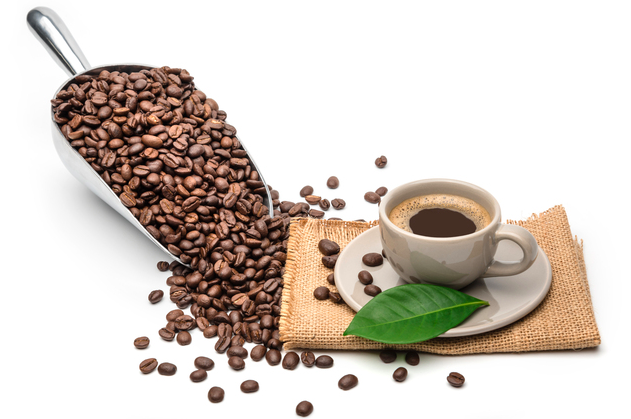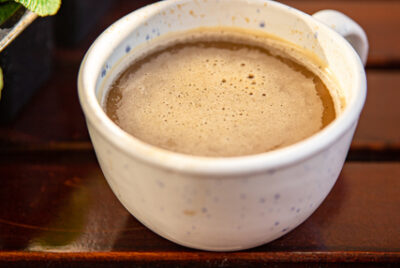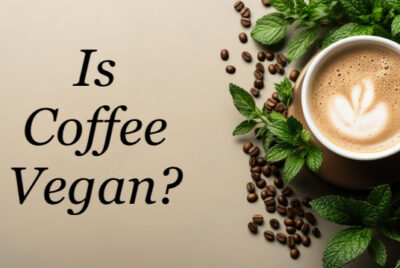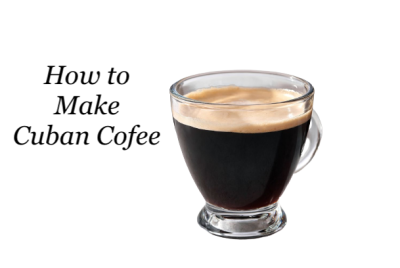Does Coffee Have Calories? How to Track your Coffee Calories
Hey there, coffee lovers! Do you find yourself asking “Does coffee have calories?”
The answer may surprise you. In this article, we’ll explore the topic of calories in coffee and shed light on how this beloved brew affects your nutritional intake and weight management goals.
Understanding Coffee Composition
Before we dive into the calorie content of coffee, let’s start by understanding the basics of this popular beverage.
Coffee is derived from the seeds of the Coffea plant, which are roasted and ground to create the flavorful drink we enjoy. It contains several bioactive compounds, including caffeine, antioxidants, and other phytochemicals that contribute to its aroma and taste.
Calorie Content in Black Coffee
If you’re a fan of black coffee, you’ll be pleased to know that this classic brew is virtually calorie-free.
That’s right, a plain cup of black coffee contains negligible calories. So, if you’re watching your calorie intake or following a weight loss plan, black coffee can be a great addition to your routine without impacting your caloric budget.
Adding Calories to Coffee
While black coffee is naturally calorie-free, things can change when you start adding extras to your cup. Let’s explore how various additions can contribute to the calorie content of your coffee.
Cream and Milk
Adding cream or milk to your coffee is a popular choice for those seeking a creamier and smoother taste. However, it’s important to note that the type and amount of cream or milk you use will determine the calorie count.
Whole Milk: Whole milk, which contains a higher fat content, adds about 9 calories per tablespoon. While it does contribute to a richer texture, it’s also important to consider its impact on your overall calorie intake. If you prefer the creaminess of whole milk but want to reduce the calorie content, consider using a smaller quantity or opting for a lower-fat milk alternative.
Reduced-Fat Milk: Reduced-fat milk, such as 2% or 1%, offers a compromise between creaminess and lower calorie content. It contains fewer calories per tablespoon compared to whole milk while still providing a satisfying taste.
Non-Dairy Alternatives: If you prefer to avoid dairy or are following a plant-based lifestyle, there are numerous non-dairy milk options available. Almond milk, soy milk, oat milk, and coconut milk are popular choices that can add creaminess and flavor to your coffee while offering different calorie profiles. It’s important to check the nutrition labels of non-dairy milks, as calorie content can vary depending on the brand and variety.
Sweeteners and Flavorings
For those with a sweet tooth, adding sweeteners and flavorings to coffee can be a delightful way to customize your drink. However, it’s crucial to remember that these additions can significantly contribute to the calorie count. Here are some common options:
Sugar: Adding sugar to your coffee can provide a sweet taste but also increase the calorie content. Each teaspoon of sugar adds approximately 16 calories. While it’s okay to enjoy a bit of sweetness, it’s essential to be mindful of the quantity you add, especially if you’re watching your calorie intake.
Artificial Sweeteners: For those looking to reduce calorie intake or manage blood sugar levels, artificial sweeteners can be an alternative to sugar. These zero-calorie or low-calorie sweeteners, such as sucralose, aspartame, or stevia, provide sweetness without adding significant calories. It’s important to choose sweeteners that suit your taste preferences and any dietary restrictions you may have.
Flavored Syrups: Flavored syrups, often used in specialty coffee drinks, can add delightful tastes like vanilla, caramel, or hazelnut to your cup. However, they can also contribute to the calorie count. The exact calorie content will depend on the brand and serving size, but it’s not uncommon for flavored syrups to add 20 to 70 calories or more to your coffee.
Whipped Cream: Whipped cream is a popular topping for indulgent coffee creations. While it adds a creamy and decadent touch, it also adds calories. Just two tablespoons of whipped cream can contribute around 100 calories or more to your coffee. If you’re watching your calorie intake, consider enjoying whipped cream as an occasional treat rather than a daily addition.
Specialty Coffee Drinks and Calories
Now, let’s talk about those indulgent specialty coffee drinks that have gained immense popularity in recent years. While these drinks can be a delightful treat for coffee lovers, it’s important to be aware of their calorie content. Let’s explore some popular specialty coffee drinks and their associated calories:
1. Cappuccino
Cappuccino is a classic Italian coffee drink made with equal parts espresso, steamed milk, and milk foam. While it’s relatively lower in calories compared to some other specialty drinks, the specific calorie count can vary depending on the size and milk used. On average, a small (8 oz) cappuccino contains around 80-100 calories.
2. Latte
A latte consists of espresso and steamed milk, topped with a small layer of milk foam. The ratio of milk to espresso in a latte makes it a creamier and milder option. However, the calorie content can increase depending on the size and type of milk used. A small (8 oz) latte typically contains around 120-150 calories.
3. Mocha
Mocha, also known as a caffe mocha, combines espresso, steamed milk, chocolate syrup or powder, and sometimes whipped cream. This indulgent drink offers a rich and chocolatey flavor profile. However, it’s important to note that the addition of chocolate and whipped cream significantly increases the calorie count. A small (8 oz) mocha can range from 200-300 calories or more, depending on the specific ingredients and portion sizes.
4. Frappuccino
Frappuccinos are blended coffee beverages that often feature a combination of coffee, milk, ice, and flavored syrups. These drinks are typically topped with whipped cream and drizzled with syrups or sauces. While they provide a refreshing and icy treat, they tend to be higher in calories due to their larger serving sizes and added toppings. A small (12 oz) frappuccino can contain anywhere from 200-400 calories, or even more depending on the specific flavors and add-ons.
5. Breve
A Breve coffee is an indulgent espresso drink made with half espresso and half steamed half-and-half. This gives the Breve a rich and creamy taste, which is denser than many other coffee drinks. The combination of cream and milk (half-and-half) used in a Breve contributes to a higher calorie count. A small (8 oz) Breve can range between 200-250 calories, depending on the amount of half-and-half used.
6. White Coffee
White coffee is a term that can refer to different types of coffee preparations, depending on the region or context. However, in many Western cultures, “white coffee” typically denotes regular coffee with milk or cream added. In some Asian cultures, specifically in Malaysia, white coffee refers to a coffee drink made from beans roasted in margarine, brewed and served with sweetened condensed milk. Depending on the style and creamer, this coffee ranges from 2-200 calories on average.
7. Espresso-based Drinks with Flavored Syrups
Many specialty coffee shops offer a wide range of espresso-based drinks with a variety of flavored syrups. These can include vanilla, caramel, hazelnut, and seasonal flavors. While these drinks can be incredibly delicious, it’s important to be mindful of the additional calories that flavored syrups add. Each pump or shot of syrup typically adds around 20 calories to your drink, so the calorie count can quickly add up if multiple pumps are used.
It’s worth noting that the calorie content mentioned here is approximate and can vary depending on the specific ingredients, portion sizes, and preparation methods used by different coffee shops. It’s always a good idea to check with the barista or refer to the coffee shop’s nutritional information for a more accurate understanding of the calorie content of your favorite specialty coffee drinks.
Impact of Coffee on Weight Loss Goals
Now that we’ve explored the calorie content of coffee, let’s discuss how this beloved beverage can impact your weight loss goals.
Caffeine and Metabolism:
Coffee contains caffeine, a natural stimulant that can temporarily boost metabolism and increase fat oxidation. This can potentially support weight loss efforts by aiding in calorie burning. However, it’s important to note that the effects may vary from person to person, and any metabolic benefits are typically modest. Coffee should be viewed as a complementary factor in a balanced diet and active lifestyle rather than a magic weight loss solution.
Coffee as an Appetite Suppressant:
Some individuals find that coffee helps suppress their appetite, leading to reduced calorie intake throughout the day. The caffeine in coffee can create a sense of satiety and delay the onset of hunger. However, it’s important to listen to your body’s cues and ensure you’re consuming a well-rounded diet to meet your nutritional needs.
Health Benefits of Coffee
Apart from its potential effects on weight management, coffee offers several health benefits that make it a beloved beverage worldwide.
Antioxidants and Disease Prevention:
Coffee is rich in antioxidants, such as chlorogenic acids and polyphenols, which have been linked to various health benefits. These antioxidants help combat free radicals in the body, potentially reducing the risk of chronic diseases like heart disease, type 2 diabetes, and certain types of cancer.
Enhanced Physical Performance:
The caffeine in coffee can also enhance physical performance by stimulating the central nervous system and reducing fatigue. It can improve endurance, increase focus, and even boost fat oxidation during exercise. However, individual responses may vary, and moderation is key to avoiding potential side effects such as jitteriness or disrupted sleep patterns.
Does Coffee Have Calories Conclusion
So, does coffee have calories? The answer depends on how you enjoy your cup of Joe. Black coffee is virtually calorie-free and can be a great choice for those watching their calorie intake.
However, adding cream, milk, sweeteners, or indulging in specialty coffee drinks can significantly increase the calorie content. It’s important to be mindful of your choices and consider the impact on your overall calorie balance and weight management goals. Also be sure to take care of your teeth and prevent coffee stains on your teeth.
Remember, coffee offers more than just calories; it brings pleasure, aroma, and potential health benefits when consumed in moderation.
Does Coffee Have Calories FAQs
Does black coffee have any nutritional value besides calories? Black coffee contains a negligible amount of nutrients, but it’s rich in antioxidants, which provide potential health benefits.
Is decaf coffee calorie-free? Decaf coffee contains a minimal number of calories, similar to regular black coffee.
Can I drink coffee while on a calorie-restricted diet? Yes, black coffee can be a calorie-free addition to a calorie-restricted diet. Just be mindful of any additions that may increase the calorie content.
How can I reduce the calorie content of my coffee? Opt for lower-fat milk or non-dairy alternatives, use natural sweeteners or sugar-free options, and be mindful of portion sizes.
Can coffee alone help me lose weight? While coffee may have modest effects on metabolism and appetite, it should be part of a comprehensive approach to weight loss that includes a balanced diet and regular physical activity. For additional reading on health related coffee drinking, check out our article “Is Coffee Gluten-Free?”




